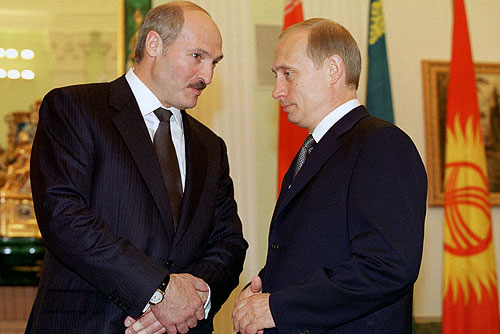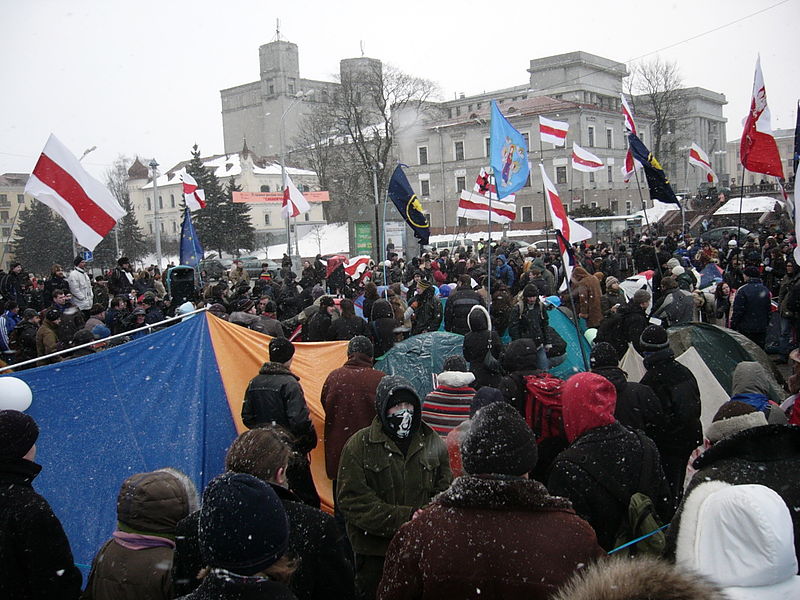Fossilized Soviet-era policies make Belarus a prime candidate for the next crisis
Kurt Nimmo
Infowars.com
February 23, 2014

Belarusian President Aleksandr Lukashenko Sunday made a point of stating that the Maidan revolution that has transformed Ukraine will not be a factor in Belarus.
“There will be no Maidan in Belarus,” Lukashenko said. He admitted that likewise tensions exist in his country and said it is the “sacred mission” of the Belarusian state to “preserve peace and stability in our land.”
Lukashenko vowed his government will “prevent even smallest indications of instability in our country. The neighboring Ukraine, which has become an arena for a clash between powerful internal and external forces, should be a lesson for us.”
Former Secretary of State Condoleezza Rice characterized Belarus as the “last remaining true dictatorship in the heart of Europe.”
Lukashenko has imposed authoritarian control over the landlocked eastern European country since 1994. Belarus declared independence in 1990 following the dissolution of the Soviet Union.
Despite widespread criticism in Europe, Lukashenko has maintained Soviet-era polices, including state ownership of the economy.
During anti-government demonstrations in 2011, Lukashenko vowed there would be “no color revolution” in Belarus like the ones in Serbia, Georgia, Ukraine and Kyrgyzstan. He blamed outside influences and the internet-based Revolution Through Social Networks for the protests. Lukashenko said the government would respond violently to peaceful demonstrations challenging the state. Hundreds of activists from the online organization were arrested in Minsk. Journalists were also arrested and detained.

Following independence “Belarus’s history presents a long litany of laws restricting the country’s independent media, legislation hindering the work of NGOs, the expulsion of foreign diplomats and NGO workers for conspiring against the regime, and arrests at demonstrations protesting Lukashenka’s policies,” write Abel Polese and Donnacha Ó Beacháin (The Color Revolutions in the Former Soviet Republics).
On Independence Day 2011, the police used tear gas and batons against hundreds of Belarusians protesting against Lukashenko’s authoritarian rule.
Freedom House, the National Endowment for Democracy, and George Soros’ Open Society funded Federation for Human Rights (FIDH) attempted to gain the release Ales Bialiatski, a purported human rights activist who was sentenced to four years in prison.
Bialiatski was the vice president of FIDH, “making him anything but a ‘human rights defender’ and instead a coordinator of US-backed destabilization efforts that have been ongoing in the Eastern European nation for years,” writes researcher Tony Cartalucci.
“Several years back,” writes Andrrei Khrapavistski (The struggle for survival of independent newspapers and the role of new media during the 2006 Belarus presidential elections), “the International Research & Exchanges Board, the Soros Foundation, and the Independent Institute of Socio-Economic and Political Studies were forced by the Belarusian government to close their offices in Belarus, but some of them continue to function either from abroad or covertly within the country, providing some insight into the Belarusian conundrum.”
The Emergency Election Sale is now live! Get 30% to 60% off our most popular products today!


